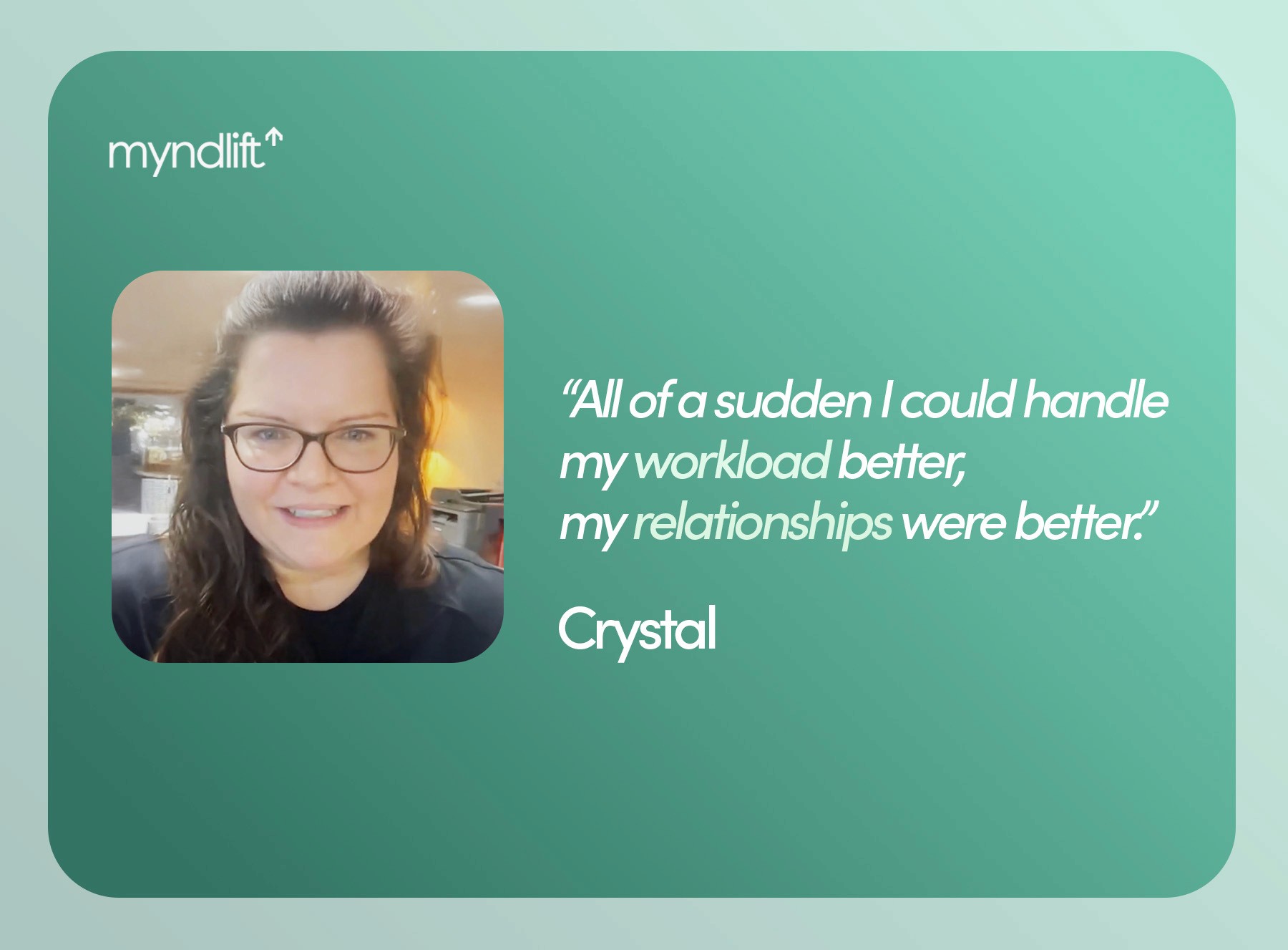Negative thought patterns are recurring and unhelpful thoughts that can lead to feelings of anxiety, depression, stress, fear, and low self-esteem.
Cognitive defusion is a process that involves distancing yourself from your negative thoughts. It allows you to view your thoughts with less seriousness and choose to pay attention only to those that you find valuable or helpful.
Using cognitive defusion techniques to improve self-esteem can help you unravel and modify your mindset.
Over time, our minds have evolved to constantly be on the lookout for problems and danger. And, although our version of danger looks different from the dangers our ancestors faced, it’s perfectly okay to feel the need to be alert and aware of your surroundings. Occasionally, these worrying thoughts and a rush of adrenaline may be helpful in providing just enough stress to motivate us to complete a task or work towards a certain goal.
For example, it's good when your inner critic reminds you that what you're about to do may not be wise. But, when the inner critic enters the realm of excessive negativity, otherwise known as negative self-talk, it can bring you down and lower your self-esteem.
Is It Possible to Fix Low Self-Esteem?
Negative thought patterns are repetitive, unhelpful thoughts that may cause anxiety, depression, stress, fear, feelings of unworthiness, and low self-esteem. Breaking the patterns can be challenging, but it gets easier once you learn to recognize and identify the thoughts as they occur and learn to step back from them.
This process of taking a step back from thoughts is called “cognitive defusion”, and it enables you to take your thoughts less seriously and only listen to them when you find them valuable or helpful.
Here are a few strategies that you can use to implement cognitive defusion and stay away from negative thought patterns:
1. The "Name It to Tame It" Strategy
Name It to Tame It is a term that was coined by author and psychiatrist Dr. Daniel Siegel and refers to a cognitive defusion technique in which you untangle your thoughts without struggling with them.
According to Siegel, when an unhelpful thought pattern arises, it is accompanied by an emotion. In order to get unstuck, you’ll need to mentally label both the thought and the emotion. You can do this by:
Identifying the thought: Many of your negative thoughts are probably repetitive and involve the same storylines. But even if you recognize the thought, you still may not be sure if it has a purpose and if you should ignore it or not. For example, you might think something along the lines of, "Who am I to be putting myself out there and getting this job at this company? Am I even good enough for this?"
When you recognize the repeating thought, ask yourself two questions: "Is this thought true?" and "Is it helpful?".
Making a mental note: Once you learn to identify a thought as part of a negative thought pattern, try to make a mental note to yourself in which you recognize when X thought is taking place yet again. Remind yourself that it's just a thought, not reality. Try to use a soothing, kind internal voice when you remind yourself of this. Gently say out loud to yourself, if you need! This reminder – that it is merely a thought – is important because it takes power away from the thought and helps you invite compassion into that moment instead of aggression or struggle.
Coming to your senses: When you label the thought, whether you're in your home, at the office, in the park, or on a subway, try to zoom in on your surroundings. Use your senses to the fullest in order to stay focused and anchored in the present moment.
2. Question Thought Patterns That Erode Self-Esteem
You may find that you try the “name it to tame it” strategy and momentarily come back to your senses, but the thoughts continue to have a grip on you. If you find yourself in this position, you can use some further cognitive defusion tools to untangle your thoughts and shift your focus.
For example, you can ask yourself the following:
Is this thought in any way practical or helpful?
Can I know whether this thought is true?
Does this thought help me take effective action?
Then you can ask yourself the following to shift your focus to more constructive thoughts that encourage effective action:
What do I really want to feel or create in this situation?
How can I make the best of this situation?
Who would I be without this negative thought?
What new story or thought can I focus on now?
How can I see this in a different or new way?
What can I be grateful for at this moment?
3. Cognitive Restructuring: Replacing Negative Thoughts
One of the parts of a treatment plan involving cognitive-behavioral therapy (CBT) is cognitive restructuring. CBT focuses on changing how you think about a situation in order to help you modify specific behavior patterns. In this case, to identify and change negative thoughts into more helpful and adaptive responses.
So, once you've identified and questioned your negative thoughts by following the first two strategies, you can replace the unwanted thoughts by:
Using hopeful statements: Treat yourself with kindness and encouragement. Instead of thinking your job interview won't go well, try telling yourself things such as, "Even though it's tough, I can handle this situation."
Forgiving yourself: Everyone makes mistakes – and mistakes aren't permanent reflections of you as a person. Rather, they're isolated moments in time. Try telling yourself, "I made a mistake, but that doesn't make me a bad person."
Avoiding “should” and “must” statements: If you find that your thoughts are full of these words, you probably put unreasonable demands on yourself or others. Removing these words from your thoughts can lead to more realistic expectations. For example, instead of saying to yourself, “I should eat healthy all the time,” try saying, “My goal is to eat healthily as much as possible.”
Focusing on the positive: Think about the parts of your life that work well. Consider the skills you've used to cope with challenging situations.
Considering what you've learned: If it was a negative experience, what might you do differently the next time to create a more positive outcome?
Relabeling upsetting thoughts: You don't need to react negatively to negative thoughts. Instead, think of negative thoughts as signals to try new, healthy patterns. Ask yourself, "What can I think and do to make this less stressful?"
Encouraging yourself: Give yourself credit for making positive changes. For example, "My job interview might not have been perfect, but I did my best— which means that I accomplished my goal.”
4. Keep a Self-Esteem Journal
Many CBT treatment plans involve the use of a thought diary as part of regular homework assignments. Journaling might help you identify negative thinking patterns and better understand how your thoughts, rather than the situations you're in, may cause emotional reactions.
When writing a self-esteem journal, try focusing on the following:
When did a negative thought happen?
What was the situation?
What emotion did you experience?
Was the thought in any way practical or helpful?
What would you say to a dear friend who experienced the same negative thought as you?
For example, a self-esteem journal entry might break down your thought process during a job interview and the emotional and physical reactions that result from negative thinking patterns. By the end of the thought analysis, you can replace irrational thoughts about rejection with more helpful and positive ways of thinking.
Summary
Cognitive defusion techniques for improving self-esteem can assist you in untangling and changing your mindset immediately. The more you practice these tools, the more mentally strong, centered, and self-aware you can become. Over time, this will help boost your self-esteem, and you will feel that change in other aspects of your life!
Myndlift provides a personalized expert-guided brain training program that can help you elevate your wellbeing by improving your sleep quality, focus, calm, and self-control over mood. Take this 10-second quiz to check if you’re eligible to kick-start your journey for better brain health.
About the author:
Dubravka Rebic
Dubravka Rebic puts a lot of time and energy into researching and writing in order to help create awareness and positive change in the mental health space. From poring over scientific studies to reading entire books in order to write a single content piece, she puts in the hard work to ensure her content is of the highest quality and provides maximum value.




